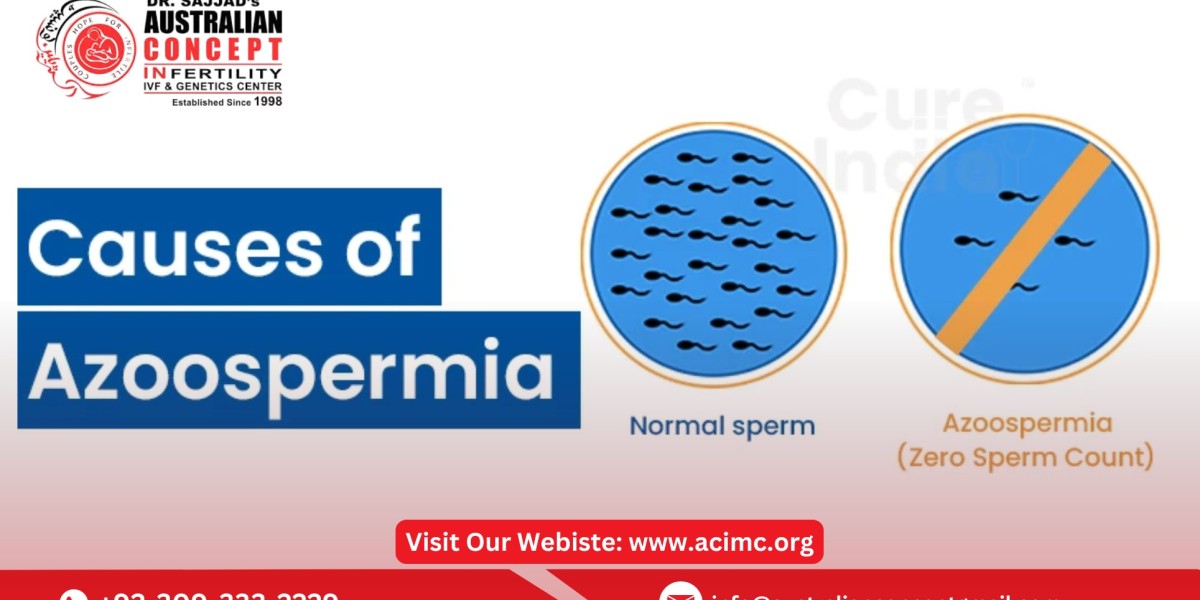Azoospermia Treatment is a condition in which no sperm is found in a man’s ejaculate. It affects about 10–15% of men with infertility issues and can be emotionally overwhelming for couples trying to conceive. Before any treatment is planned, it’s essential to accurately diagnose the condition and determine its type. Understanding how azoospermia is diagnosed before treatment can help patients prepare for their fertility journey and make informed decisions.
What Is Azoospermia?
Azoospermia is classified into two main types:
Obstructive Azoospermia (OA): Sperm is produced in the testicles but cannot reach the semen due to a blockage in the reproductive tract.
Non-Obstructive Azoospermia (NOA): The testicles fail to produce sufficient or any sperm due to hormonal issues, genetic defects, or testicular damage.
Determining whether azoospermia is obstructive or non-obstructive is key in deciding whether treatment should involve surgery, hormonal therapy, or assisted reproductive technologies like ICSI.
Step 1: Medical History and Physical Examination
The diagnostic process starts with a thorough review of the patient’s medical, sexual, and family history. Doctors ask about:
History of childhood illnesses (e.g., mumps after puberty)
Past surgeries (especially hernia repair, varicocele, or testicular surgeries)
Exposure to toxins or radiation
Use of medications, steroids, or recreational drugs
Any history of infections or sexually transmitted diseases
Sexual function and frequency of intercourse
A physical examination is also conducted to assess the size and consistency of the testicles, presence of varicocele, and development of male secondary sexual characteristics (such as facial hair, muscle mass, and voice depth).
Step 2: Semen Analysis
Semen analysis is the primary and most essential test in diagnosing azoospermia. The process involves:
Collecting a semen sample after 2–7 days of abstinence
Analyzing the sample under a microscope to check for the presence of sperm
Repeating the test 1–2 more times to confirm the diagnosis
If no sperm is detected in at least two separate semen samples, the diagnosis of azoospermia is made.
Step 3: Hormonal Evaluation
Hormonal tests help determine whether the azoospermia is caused by problems in the brain (pituitary gland) or directly in the testicles. The key hormones tested include:
FSH (Follicle-Stimulating Hormone): High levels may indicate testicular failure (NOA), while low or normal levels can point toward OA or hormonal dysfunction.
LH (Luteinizing Hormone): Works with FSH and supports testosterone production.
Testosterone: Low testosterone may be linked to hypogonadism.
Prolactin and Estradiol: Evaluated if hormonal imbalances are suspected.
TSH (Thyroid-Stimulating Hormone): As thyroid health also influences fertility.
Abnormal hormone levels can reveal whether sperm production is occurring and guide further testing.
Step 4: Genetic Testing
Genetic evaluation is crucial, especially in cases of non-obstructive azoospermia, to rule out inherited conditions that impact sperm production. These include:
Karyotyping: Checks for chromosomal abnormalities such as Klinefelter syndrome (47,XXY).
Y-Chromosome Microdeletion Test: Identifies missing sections in the Y chromosome that can prevent sperm production.
CFTR Gene Testing: In men with obstructive azoospermia and absent vas deferens, cystic fibrosis mutations may be detected.
These tests not only help in diagnosis but also in planning assisted reproductive treatment, especially when considering ICSI or using donor sperm.
Step 5: Scrotal and Transrectal Ultrasound
Ultrasound imaging helps in evaluating both the testes and the male reproductive tract. This includes:
Scrotal ultrasound: Checks for abnormalities in the testes, presence of varicocele, or tumors.
Transrectal ultrasound (TRUS): Looks for blockages or obstructions in the ejaculatory ducts, seminal vesicles, or vas deferens.
If an obstruction is found, surgical correction may be a viable treatment option.
Step 6: Testicular Biopsy or Micro-TESE
In cases where non-obstructive azoospermia is suspected, a testicular biopsy may be needed to confirm whether sperm is being produced within the testes.
Conventional biopsy: A small sample of testicular tissue is removed and analyzed.
Micro-TESE (Microsurgical Testicular Sperm Extraction): A more advanced method using a microscope to locate areas of sperm production.
If viable sperm is found, it can be frozen and used later in ICSI treatment. This step also confirms the diagnosis of NOA and helps rule out complete spermatogenic failure.
Optional: Specialized Tests
Additional tests may be considered based on individual cases:
Antisperm Antibody Test: Checks for immune reactions that damage or prevent sperm movement.
Urine Analysis After Ejaculation: To rule out retrograde ejaculation.
MRI Scans: In rare cases, brain imaging may be done if a pituitary tumor is suspected.
Final Thoughts
The process involves multiple steps, including semen analysis, hormone testing, genetic screening, ultrasounds, and sometimes biopsy. This thorough approach ensures accurate identification of the type and cause of azoospermia, enabling fertility specialists to offer the most effective treatment strategy—be it surgery, hormonal therapy, or assisted reproductive techniques like ICSI treatment.







